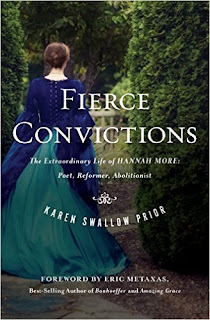
Today Kathy takes us on a journey through the early history of children's literature with a retrospective on Lewis Carroll's classic
Alice's Adventures in Wonderland. Enjoy!
Alice's Wonderful World
“Alice was beginning to get very tired of sitting by her sister on the bank and having nothing to do…when suddenly a White Rabbit with pink eyes ran close by her.” As my ten year old daughter and I read these words together we were suddenly whisked away down the rabbit hole with Alice to join her adventures in Wonderland. On November 26, 2015, Lewis Carroll’s book
Alice’s Adventures in Wonderland celebrated its sesquicentennial, which is a fancy way of saying “150th birthday party.” What has made this particular book a favorite of children and adults alike? Why has this particular story endured through fifteen decades? I believe the answer lies in the pages of history.
From didactics to enjoyment
In retrospect,
children’s literature before the publication of Alice’s Adventures in Wonderland stemmed from spoken stories, songs
and poems which were used to educate, instruct, and entertain
 |
| Lewis Carroll |
children as well
as adults. Homer’s The Odyssey, Aesop’s Aesop’s
Fables, John Bunyan‘s The Pilgrim’s
Progress and Perrault's Fairy Tales
by Charles Perrault were considered the normal literary fare of the day.
However, in 1744 John Newbery created what was believed to be the first modern
children’s book, A Pretty Little
Pocket-Book. The book was specifically targeted at giving enjoyment to children containing a
mixture of rhymes, picture stories and games for pleasure. Author Phillip
Pullman provides insight into the world of children’s literature prior to 1865
in his forward to The Complete Alice, “There
were books for children before 1865, but they were almost all written to make a
moral point. Good children behave like this; bad children behave like that, and
are punished for it, and serve them right.” (1) In the mid-19th century the genre
of children’s literature began to shift away from didacticism to pave the way
for humorous, child-oriented books which were in tune with the child’s
imagination. This time period of history is referred to as the Golden Age of Children’s Literature. It
was well named so, for many of what are now considered children’s literary
classics were penned during this time
period including, Tom Brown’s School Days
by Thomas Hughes, The Water Babies by
Charles Kingsley and Lewis Carroll’s Alice’s
Adventures in Wonderland.
 |
| Alice Liddell, the girl behind Alice in Wonderland |
Lewis Carroll changes children's stories
Charles Lutwidge Dodgson, known by his pen name as Lewis
Carroll was a mathematician, inventor of words, magic tricks, games, riddles,
nonsense verse, puzzles but most of all he is
remembered for his ability to “spin a yarn.” Charles, a tall, slim, shy man who spoke with
a stammer and was more comfortable the company of children than adults. While
serving as a mathematics professor at Christ Church College in Oxford, England
he became acquainted with the Dean of Christ Church College, Henry Liddell, his
wife, Lorina and their three daughters, Lorina, Edith, and Alice. It was during
a rowing expedition along the River Isis in Oxford that Dodgson began his
tales of Alice’s Adventures in Wonderland,
featuring Alice Liddell as the protagonist. During subsequent
meetings with the Liddell family, Dodgson’s storyline began to take shape based
on experiences he shared with the Liddells. Eventually, Alice Liddell
requested a written copy of Mr. Dodgson’s stories. The result was a hand
written and illustrated book titled, Alice’s
Adventures Underground. Soon afterward, Dodgson was persuaded to publish
the book to make it available to the general public. The end result of
Dodgson’s labor was the children’s classic Alice’s
Adventures in Wonderland by Lewis Carroll with illustrations by Sir John
Tenniel. The initial 2,000 copies of the book sold out quickly due to the
sensation it created among children and adults alike. Since its first
publication in 1865 Alice’s Adventures in
Wonderland has never been out-of-print.
Enduring through time
As I talked to
bibliophiles who have a fondness for Alice and her adventures, I noticed there
was a commonality among us which draws us to the story again and again. An
imaginary land which can only be accessed by falling down a rabbit hole,
nonsensical verse, a host of varied and colorful characters, and an adventure
of a lifetime are all the things which have allowed this particular story to
endure through the pages of time. Lewis Carroll’s children’s classic has
inspired Alice-themed cinematic, theatrical and dance productions, as well as
literary prequels, sequels and mysteries. In addition, there are books which
have been written about the author and his famous yarn. One of our favorites is
by Christina Bjork and Inga-Karin Eriksson titled The Other Alice: The Story of Alice Liddell and Alice in Wonderland.
I believe author,
Phillip Pullman sums it up best when he penned these thoughts on Alice’s Adventures in Wonderland, "In
Alice, for the first time, we find a realistic child taking part in a story
whose intention was entirely fun. Both children and adults loved them at once,
and have never stopped doing so. They are as fresh and clever and funny today
as they were a hundred and fifty years ago.” (2)
Bibliography
1. The
Complete Alice by Lewis Carroll; Henry Holt & Co.; 2015
2. Ibid
Thank you Kathy! Any other Alice fans out there? Chime in and share your favorite Alice memories.










